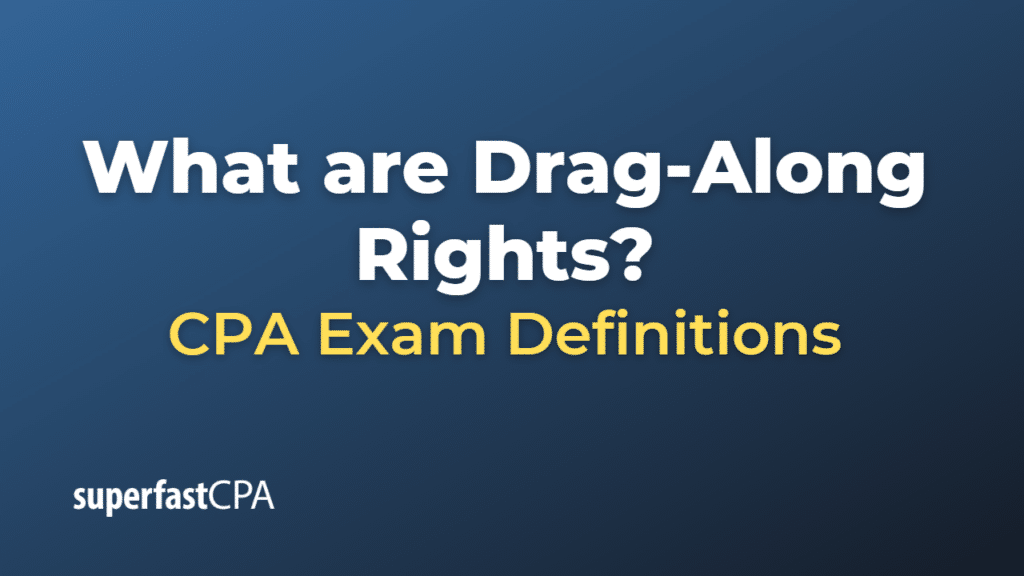Drag-Along Rights
Drag-along rights are a provision often found in shareholders’ agreements, which allows majority shareholders to force the minority shareholders to join in the sale of a company. The majority shareholder doing the ‘dragging’ must give the minority shareholders the same price, terms, and conditions as any other seller.
This provision can be valuable in a few ways:
- It can help avoid a situation where a small group of shareholders blocks the sale of a company, thereby ensuring that a deal can go through even if some shareholders are opposed.
- It can be particularly attractive to potential acquirers, as it allows them to acquire 100% of a company, helping to avoid the complications of dealing with minority shareholders post-acquisition.
- It helps ensure that all shareholders (not just the majority) share in the benefits of a high-price sale.
While drag-along rights protect the interests of majority shareholders, they can be seen as less favorable to minority shareholders because they limit their ability to choose when and to whom they sell their shares. However, in many cases, the provision also ensures that minority shareholders receive the same sale terms as the majority, which can protect their interests in the event of a sale.
It’s worth noting that the specific rights and thresholds can vary depending on the exact wording of the shareholders’ agreement.
Example of Drag-Along Rights
Imagine you have a tech startup company. The company has three shareholders:
- Founder A who owns 60% of the company.
- Founder B who owns 30% of the company.
- An early-stage employee who owns 10% of the company.
Now, a larger tech company comes along and offers to buy the startup. They’re offering a good price, and both Founder A and Founder B want to sell. However, the early-stage employee, who is a minority shareholder, doesn’t want to sell.
This is where drag-along rights come into play. In the shareholders’ agreement, there is a provision that allows the majority shareholders (Founder A and Founder B, who combined own 90% of the company) to force the minority shareholder to sell their shares. This means the minority shareholder must sell their shares under the same terms and conditions.
So, even though the early-stage employee wanted to hold onto their shares, the drag-along rights provision in the shareholders’ agreement means they must go along with the majority and sell their shares. This ensures that the sale can go through and all shareholders benefit from the sale price.
This example simplifies the complexities of real-world mergers and acquisitions and the various legal and financial factors at play. But it helps illustrate how drag-along rights can work.













